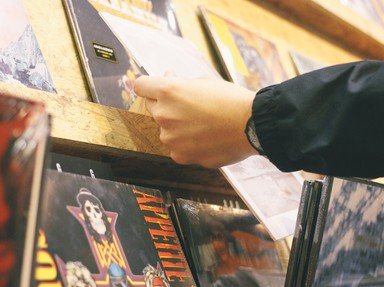Quiz Answer Key and Fun Facts
1. Some old tunes have been used over and over again for different songs. Do you know the name of the melody behind many folk songs and hymns, most famously 'Danny Boy'?
"Oh Danny Boy, the pipes, the pipes are calling
From glen to glen, and down the mountainside.
The summer's gone, and all the roses falling.
'Tis you, 'tis you must go and I must bide."
2. When Elvis Presley heard a song by U.S. singer Tony Martin called 'There's No Tomorrow' he privately recorded his own version and later asked for new lyrics to be written especially for him. The resulting song was 'It's Now or Never' and it became a massive international hit.
"It's now or never,
come hold me tight
Kiss me my darling,
be mine tonight"
What is the name of the original Italian song from which the tune came?
3. The club song of the Anacreontic Society of 18th century London is sometimes labelled as a drinking song as it celebrates hedonism and the enjoyment of wine, women and song.
"While, snug in their clubroom,
They jovially twine
The Myrtle of Venus
With Bacchus' Vine."
But which country has its national anthem set to the same tune?
4. The most commonly used tune for 'The Red Flag', the anthem of the British Labour movement, is another example of a melody being used for a wildly different purpose to its original.
"Then raise the scarlet standard high,
Within its shade we'll live and die,
Though cowards flinch and traitors sneer,
We'll keep the red flag flying here."
Where did the tune for 'The Red Flag' come from?
5. The 'Good Old Song' of the University of Virginia uses the tune of a very widely known song which many people sing at a certain time of year.
"That good old song of Wah-hoo-wah--we'll sing it o'er and o'er
It cheers our hearts and warms our blood to hear them shout and roar
We come from old Virginia, where all is bright and gay
Let's all join hands and give a yell for dear old UVa."
What song is the melody from?
6. Can you guess which country's national anthem shares its melody with the hymn, 'Glorious Things of Thee are Spoken'?
"Glorious things of thee are spoken,
Zion, city of our God!
He, whose Word cannot be broken,
Formed thee for His own abode."
7. They say imitation is the sincerest form of flattery, so it's appropriate that Bob Dylan used a tune from one of Woody Guthrie's songs when he wrote 'Song to Woody' in tribute to his hero.
"Hey, Woody Guthrie, but I know that you know
All the things that I'm a-sayin' an' a-many times more.
I'm a-singin' you the song, but I can't sing enough,
'Cause there's not many men that done the things that you've done."
Do you know which Woody Guthrie song the tune came from?
8. Allan Sherman had a big hit in 1963 with his novelty song "Hello Muddah, Hello Fadduh (A Letter from Camp)".
"Hello Muddah
Hello Fadduh
Here I am at
Camp Granada
Camp is very
entertaining
And they say we'll have some fun if it stops raining."
The melody is from a ballet section of an opera. Can you name it?
9. The song 'John Brown's Body' became a popular marching song for Union troops in the American Civil War.
"John Brown's body lies a-mouldering in the grave;
John Brown's body lies a-mouldering in the grave;
John Brown's body lies a-mouldering in the grave;
His soul's marching on!"
The numerous variants of the lyrics were often a little coarse, which led to a friend of Julia Ward Howe saying to her: "Why do you not write some good words for that stirring tune?". What song did she come up with?
10. You can't just put any old lyrics to a melody and expect it to sound right - just try singing 'My Way' to the tune of 'The Can Can' and you'll see why. There is a long-running comedy panel game on British radio in which panellists are sometimes asked to do exactly that with often hilarious (and sometimes surprisingly good) results. What is the name of this show?
Source: Author
ErnestS
This quiz was reviewed by FunTrivia editor
ralzzz before going online.
Any errors found in FunTrivia content are routinely corrected through our feedback system.
